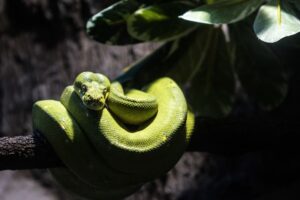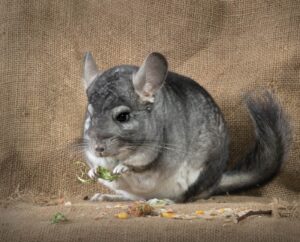Table of Contents
ToggleIntroduction
The peacock is not merely a bird. It is a symphony of colors, a manifestation of nature’s artistry, and a symbol that has resonated with various cultures for centuries.
A Brief Overview
The term “peacock” is often used colloquially to refer to both the male and the female bird, but in strict ornithological terms, a peacock is the male of the species known as peafowl. Females are termed “peahens” together; they captivate our imagination with their vibrant colors and intriguing behaviors.
Nature’s Canvas: Understanding Their Beauty
Anyone who has witnessed a peacock unfurling its majestic tail would agree that it’s an awe-inspiring sight. This magnificent display of elongated feathers adorned with iridescent “eyes” is a brilliant evolutionary adaptation for attracting a mate.
When the sun’s rays strike these feathers, the microscopic structures within them refract the light so that they shimmer and shine, displaying a myriad of colors.
The design and structure of these feathers are a testament to the intricacies of evolution. The peacock’s vibrant colors aren’t random; they result from complex genetic traits and environmental factors honed over millennia.
Physical Characteristics
The peacock, renowned for its splendor and majesty, holds a unique position in the avian world. While most birds utilize camouflage and muted colors for survival, the peacock breaks this mold, showcasing a visual spectacle of shimmering shades. In this chapter, we’ll delve into the various physical features of the peacock, from its iconic tail to its vibrant hues, and understand the purpose behind its unparalleled beauty.
The Crown Jewel: The Train
Description: The peacock’s train isn’t technically its tail but somewhat elongated upper tail-coverts. These feathers can be up to six feet long in some mature males, comprising about 60% of the bird’s total body length.
Iridescent Eyespots: These ocelli, or eyespots, shimmer in shades of blue, gold, green, and more. Their iridescence is due to microscopic crystal-like structures in the feathers.
Purpose: While beauty is a given, the primary function of the train is for courtship displays. The peacock fans out these feathers, making a grand display to attract potential mates.
Anatomy of Color: Why So Vibrant?
Microscopic Structures: The vibrant colors aren’t due to pigments alone but arise from tiny structures in the feathers that refract light, producing the iridescent hues.
Shades and Variations: Different species have distinct colors. The Indian Peacock boasts primarily blue and green plumage, while the Green Peafowl features more bronze and green.
Differences Between Males (Peacocks) and Females (Peahens)
Males (Peacocks):
Vibrant Plumes: Males sport the more dazzling colors, crucial in mate attraction.
Size: Typically more significant than the females, especially when including the train.
Sound: Their calls are more frequent, often used to attract females and establish territory.
Females (Peahens):
Muted Colors: Peahens, responsible for breeding and defending their young, have evolved a more muted plumage of brown or grey to better blend in with their surroundings.
Size: Generally smaller and lacking the dramatic train.
Nesting: They’re responsible for building the nest and taking care of the chicks.
Behavior And Habits
When you think of a peacock, it’s likely the image of a dazzling display of feathers that comes to mind. However, beneath this show of splendor lies a range of behaviors and habits that make the peacock a fascinating creature. In this chapter, we’ll venture beyond the plume, delving into the peacock’s everyday life, communication styles, and breeding rituals.
Daily Routine: From Dawn to Dusk
Dietary Habits: Peafowls are omnivorous, meaning they consume plant- and animal-based food. Their diet includes seeds, fruits, insects, small mammals, and even reptiles. The peafowl can peck and scratch the ground for food because of its powerful beak and legs.
Resting & Roosting: Despite their ground-feeding habits, peafowls prefer to roost (sleep) in trees, protecting them from ground-based predators. They descend at dawn to start their day and return to their roosts at dusk.
Courtship: A Dance of Colors and Sounds
The Majestic Display: The male fans out his train and often vibrates feathers, producing a shimmering visual spectacle. This isn’t a silent affair: the rustling of the feathers creates a rhythmic sound.
Calls and Songs: Accompanying the visual display are loud calls intended to attract peahens and deter rival males. The frequency and volume of the calls can indicate the health and vitality of the male, providing cues for the females during mate selection.
Peahen’s Perspective: While it might seem that peahens passively select the most flamboyant peacock, recent studies suggest that peahens actively evaluate potential mates based on various factors, including size, color, and grain quality.
Vocalizations: More Than Just Mating Calls
Territorial Calls: Males often use loud calls to establish and defend their territory, especially during the breeding season.
Distress Calls: A sharp, repeated call usually indicates the presence of predators or danger.
Communication Among Groups: Peafowls, typically found in flocks, use a variety of calls and sounds to convey information to one another, such as when a new food source has been found or when danger is present.
Social Structure and Interactions
Flocking Behavior: Outside of the breeding season, peafowls are often seen in groups, known as parties. These groups typically consist of mixed genders and ages.
Hierarchy and Dominance: A dominance hierarchy can be established within these groups, especially among males. This is typically determined through displays, calls, and occasionally physical confrontations.
Parenting and Offspring Care
Nesting: Once a peahen is impregnated, she searches for a secluded spot on the ground to lay her eggs. The nests are usually shallow scrapes lined with leaves, twigs, and other available materials.
Role of the Peahen: The male plays no part in nesting or raising the chicks. The peahen incubates the eggs, and after they hatch, she assumes the role of the primary caregiver, guiding the peachicks to food sources and protecting them from threats.
Growing Up: Peachicks are precocial, meaning they are born with open eyes, can stand and walk soon after hatching, and are covered in downy feathers. They begin to forage for food within days, under the mother’s watchful eye.
Conclusion
In the captivating world of nature, the peacock embodies beauty, symbolism, and intricate design. Its presence transcends time, culture, and geography, leaving an indelible mark on the natural world and the human imagination.
The peacock’s resplendent plumage, a tapestry of iridescent colors and mesmerizing patterns, is not just a result of evolution’s brushstroke but a testament to the complexity and brilliance of life’s mechanisms. The microscopic structures that create its ethereal glow reflect the harmonious interplay of biology, physics, and aesthetics, reminding us of the delicate balance that sustains the wonders of the animal kingdom.







